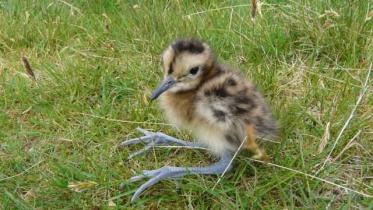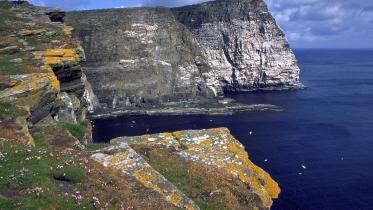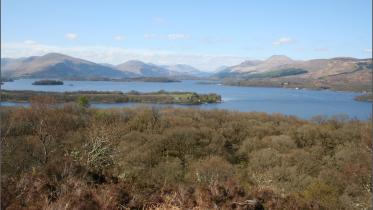About conservation advice documents for European sites in Scotland
Conservation Advice Documents for European Sites in Scotland
NatureScot has produced documents to help protect and manage European sites in Scotland (aka Natura sites). Initially these documents include site conservation objectives for terrestrial and marine Special Areas of Conservation (SACs) and marine Special Protection Areas (SPAs):
- Conservation Advice Packages (CAPs) – these cover all terrestrial SACs.
- Conservation and Management Advice documents (CMAs) – these cover marine SACs and marine SPAs.
Purpose of Conservation Advice Packages and Conservation and Management Advice documents
Scotland’s SACs and SPAs have some of the best examples of nature in the country, and we want this to continue. These documents have therefore been prepared by NatureScot to help owners and occupiers of these sites, competent and relevant authorities, and anyone else with an interest in them to achieve this aim. The documents:
- revise and update conservation objectives for the features of each site
- clarify the essential site specific elements needing to be in place in order for the conservation objectives to be achieved. This will assist competent authorities undertaking Habitat Regulations Appraisal (HRA) of projects and plans.
- advise on management needed to achieve the conservation objectives, identifying existing conservation measures, where further site specific management may be required and, where appropriate, site specific conservation measures.
In addition the CMAs meet NatureScot’s obligations under Regulation 33 of the Habitats Regulations to provide advice to relevant authorities for European marine sites.
We will update these documents periodically to take account of changes in feature condition or if there are other substantive site changes. A review of all CAPs and CMAs should be conducted at 10 yearly intervals.
Main sections
Conservation Objectives
Conservation objectives are set for each qualifying feature of each site. They have two key purposes:
1. to set the framework for establishing appropriate conservation measures for each feature of the site.
2. to provide a benchmark against which plans and projects are assessed. The conservation objectives set out the essential elements needed to ensure that a qualifying habitat or species is maintained or restored at a site. If all the conservation objectives are met, then the integrity of the site will be maintained and deterioration or significant disturbance of the qualifying features avoided.
The objectives comprise overarching objectives (objectives 1 and 2) that apply to all features of the site, and additional objectives (2a, 2b and 2c) that have been written for each feature. Each objective includes site-specific supplementary advice.
The overall aim for each European site is for it to make an appropriate contribution to achieving favourable conservation status (FCS) across the UK for each of the relevant features. It is hard to determine the contribution that each site’s features makes to FCS, but features in favourable condition at a site level are likely to be making the best contribution possible. Therefore if a feature is in unfavourable condition on a European site, an objective for the site will be to restore it to favourable condition. This may be through pro-active management, or where appropriate natural recovery. The reasons for unfavourable condition are set out in the documents and restore objectives tailored accordingly to address the specific issues stated. For example this might be to restore the structure of a habitat but to maintain its extent.
It is important to stress that whilst conservation objectives are required in order to carry out HRAs of proposed plans or projects on or affecting sites, they do not set obligatory requirements for the day-to-day management of these sites by land managers. Nor do they provide obligations on land managers or developers to carry out restoration work alongside other proposed activities. However they set out NatureScot’s overall views on how sites and features should be managed, and appropriate assessments will have to consider whether any plan or project would undermine the ability to achieve the elements described in the objectives.
Conservation priorities
This section of the document sets out what priority will be given to the different features of a European site where there might be a need to favour the management of one feature over another. For example this could include favouring a rare woodland habitat over more widespread open ground habitats, or managing the interests of one species over another.
Prioritisation will normally favour Habitats Directive priority habitats (there are no priority species in Scotland) and will often follow global selection grades. However, there can be situations where prioritisation will be linked to aspects of the ecological history of a site. In each case a concise but robust rationale is given to justify the priority ranking.
On many European sites there is no need to prioritise features as there are no potential management conflicts.
This section also stresses the need to take into account the requirements of features of any overlapping SPAs or SACs in the management of the European site in question.
Advice to Support Management and Conservation Measures
Conservation Advice documents are not management plans, and it is not NatureScot’s intention to dictate management actions on European sites. NatureScot’s role is to provide advice, for discussion with owners, occupiers and stakeholders on the types of management we see as appropriate to the site/feature(s) based on the conservation objectives and conservation priorities for the site. Where the conservation objectives are to maintain and the feature is in favourable condition, there may be no specific further management action needed. Where the qualifying feature is reported to be unfavourable, there may be appropriate management measures that can be undertaken to restore the feature to favourable condition.
Conservation measures can be carried out through a number of different mechanisms. These include statutory land and marine use regulation (for example via SSSIs, marine licences), positive management (for example through agri-environmental schemes, fisheries measures and management agreements) and long-term management plans. There are many stakeholders that have a role to play in delivering conservation measures, including land managers, marine developers, regulatory bodies and funding authorities.




